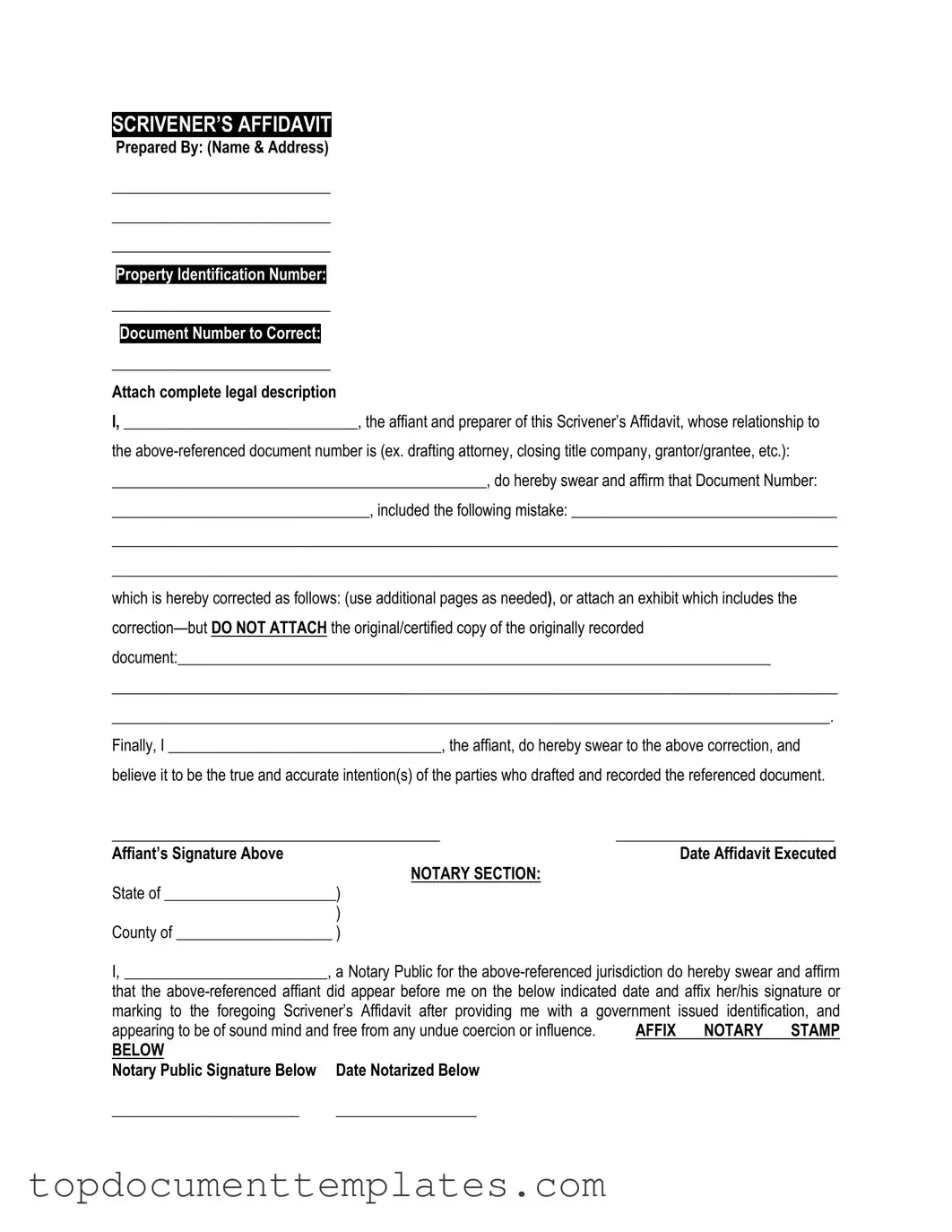Blank Scrivener's Affidavit PDF Form
The Scrivener's Affidavit is a legal document used to affirm the accuracy of a written instrument or to clarify discrepancies in a document. This form is often utilized in real estate transactions and other legal matters to ensure that all parties have a clear understanding of the terms involved. For those needing to complete this form, click the button below to get started.
Open This Form
